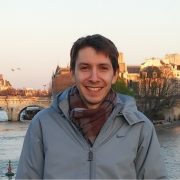
Carlo Arosio
“What I greatly appreciated about the fellowship was ESA’s flexibility and support, especially during COVID-19 times, which made it possible to adapt the schedule and adjust some of the foreseen objectives according to the project development. The fellowship gave me the opportunity to independently manage a project for the first time and encouraged the collaboration with other research groups in the ozone community.”
After the end of the Living Planet Fellowship, Carlo continued his Post-Doc at University of Bremen, involved in a new project with ESA.
Atmospheric Chemistry and Physics (2022)
Atmospheric Measurement Techniques (2022)
Atmos. Meas. Tech. (2021)
Total ozone column retrieval from OMPS-NM measurements
Atmospheric Measurement Techniques Discussions (2021)